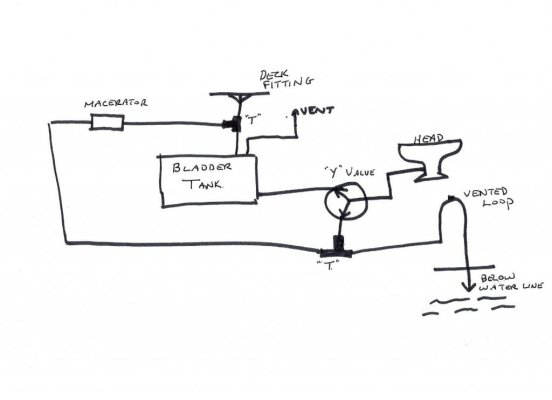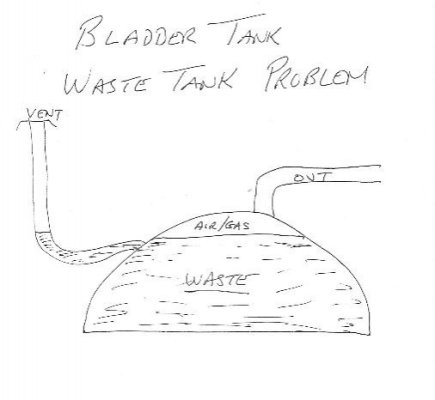Tony B
Guru
- Joined
- Jul 18, 2011
- Messages
- 1,251
- Location
- Cruising/Live-Aboard USA
- Vessel Name
- Serenity
- Vessel Make
- Mainship 36 Dual Cabin -1986
Here is the situation:
When offshore last, the macerator quit working. I hear the motor running but nothing is going anywhere.
We switched the potty to direct overboard when out there and I think it was still going in the tank but no way of knowing.
When we got back to the dock, we have a dockside pumpout barge come by and empty the tank for us. Well.....it starts to suck for about 3 to 5 seconds and then quits. It sounds like air or something is in a line or something but I dont know what is wrong.
Attached is a sketch I made of the system from what*I could get my wife to describe over the phone. I'm not sure if this sketch is accurate and I wont know till I get home.
All I know is that when I get home I got to put up with a lot of s**t.
Thanks in advance.
When offshore last, the macerator quit working. I hear the motor running but nothing is going anywhere.
We switched the potty to direct overboard when out there and I think it was still going in the tank but no way of knowing.
When we got back to the dock, we have a dockside pumpout barge come by and empty the tank for us. Well.....it starts to suck for about 3 to 5 seconds and then quits. It sounds like air or something is in a line or something but I dont know what is wrong.
Attached is a sketch I made of the system from what*I could get my wife to describe over the phone. I'm not sure if this sketch is accurate and I wont know till I get home.
All I know is that when I get home I got to put up with a lot of s**t.
Thanks in advance.


